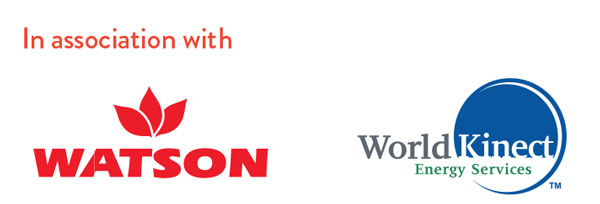Debate | Low carbon fuels
Fuelling change
Radical changes are needed if the construction sector is to be decarbonised. Fuel transition is one opportunity to cut down emissions. Sotiris Kanaris reports.
DEBATE BACKGROUND
90%Reduction in CO2 emissions through HVO renewable diesel compared to regular diesel
10M.tCO2 emissions from UK construction in 2021
78%Construction Leadership Council’s target reduction in diesel-powered plant by 2035
 In recent years construction industry players have intensified efforts to cut carbon emissions as they strive to hit the 2050 net zero carbon target. More attention is being paid to the amount and types of materials used in construction, with the aim of slashing embodied carbon.
In recent years construction industry players have intensified efforts to cut carbon emissions as they strive to hit the 2050 net zero carbon target. More attention is being paid to the amount and types of materials used in construction, with the aim of slashing embodied carbon.
But to hit the 2050 target, the sector must also switch away from using fossil fuels.
NCE recently teamed up with World Kinect subsidiary Watson Fuels to discuss the decarbonisation solutions the industry is looking at and to examine the opportunities and challenges associated with the transition to lower carbon fuels.
AT THE DEBATE
This report is based on a round table discussion held in October. The discussion was held in association with Watson Fuels and World Kinect. Contributing to the discussion were:
David Carroll senior sustainability consultant, Watson Fuels
Darren Carter managing director, Map Plant
Andrea Davidson head of environmental sciences, HS2 Ltd
Mark Fowler procurement leader, Laing O’Rourke
Martin Hamilton director UK & Ireland energy management, World Kinect
Graeme Jones managing director, C-Probe Systems
Chris Mattock senior director, Arcadis
Ian O’Connor head of carbon engineering, John Sisk & Son
Athina Papakosta sustainability and carbon lead, Skanska Costain Strabag JV
Belinda Smart deputy editor, NCE
Sally Sudworth board director, RedR
Paul Tillier senior framework manager, Vinci Construction
Jim Williams commercial director UK & Ireland, Watson Fuels
“Setting [carbon] targets is easy, the problem is being able to deliver them from a financial perspective, as well as from a supply chain perspective,” says World Kinect director of UK and Ireland energy management Martin Hamilton.
Hamilton adds that industry players must establish a clear process for meeting targets.
When it comes to hitting those targets, there are two options. One is to reduce carbon emissions; the other is to offset them.
HS2 Ltd head of environmental sciences Andrea Davidson says the industry should evaluate design and construction methods and look for ways to reduce carbon emissions as much as possible, before looking at offsets as a solution.
Arcadis senior director Chris Mattock says offsetting, while useful for many companies as a first step towards reducing their carbon footprint, is not driving the industry forward as it does not accelerate change.
“Last resort is the word we would use for offsetting at Lower Thames Crossing,” he says. Mattock was lowest carbon programme leader on that project until August 2023.
 “We wanted to get as close to zero [carbon] as possible using solutions that would not only help the project, but leave a legacy.
“We wanted to get as close to zero [carbon] as possible using solutions that would not only help the project, but leave a legacy.
“When you have some carbon at the end, offsetting is better than not offsetting,” Mattock adds.
Finding ways to reduce carbon can be more challenging than offsetting. “Some people are just going to choose the easy option, as from a public perception point of view, net zero is net zero,” says Mattock.
Cost is also a factor for some decisions to choose carbon offsetting.
John Sisk & Son head of carbon engineering Ian O’Connor says “offsets are not so expensive, so they don’t have much [financial] impact”.
The high cost of some carbon cutting solutions is making offsetting more popular in the current challenging economic environment, according to Watson Fuels commercial director for UK and Ireland Jim Williams.
“There is still resistance to electric plant even by fairly large contractors because of cost“The first line of defence would be solutions that do not emit carbon, so ideally you would electrify everything you can,” says Mattock.
He points that the high upfront cost of electrical equipment makes this unpopular. But the significantly lower operating costs of electric machinery compared to diesel plant, mean that investing in electric plant would pay for itself over time.
Map Plant managing director Darren Carter agrees. “We’ve been trying to push a new division, starting off with electric tools and electric plant, then moving on hopefully to hydrogen. There is still resistance to electric plant even by fairly large contractors because of cost.”
Carter says another challenge for the uptake of electric plant is the limited range of products. O’Connor adds that to achieve net zero carbon with electric plant, companies would also have to rely on the power grid to decarbonise. “Is that [decarbonisation of the grid] happening at a pace that needs to happen? I am not sure,” he adds.
FUEL TRANSITION
With electric plant use facing challenges, the construction industry has been focusing on using lower carbon plant fuel as a way to cut carbon emissions.
“Hydrogen is the overall end goal,” says Williams but until then there are some alternative products in the market with reduced emissions compared to traditional diesel. He points to hydrotreated vegetable oil (HVO), also known as renewable diesel, which is a second-generation biofuel made of waste products like used cooking oils or animal fats.
Another product cited by Williams is Shell’s GTL Fuel which is made from natural gas. This produces lower emissions compared to diesel, but he says that it is not as good from a renewable point of view as HVO.
 Some contractors are powering their plant with HVO to cut emissions
Some contractors are powering their plant with HVO to cut emissions
He says HVO is the biggest seller and adds that the clients using HVO are reducing their greenhouse gas emissions by up to 90%.
“One of the barriers is that there’s a premium to pay for HVO. A lot of customers won’t commit because sometimes you’re looking at a 30p per litre premium,” says Williams.
“There are construction companies burning diesel now, purely because it is cheaper than HVO,” adds Laing O’Rourke procurement leader Mark Fowler.
Williams says the government should incentivise the use of HVO to encourage its use. He points to the positive outcomes achieved through incentivising the use of R99 – the equivalent of HVO – in some western states of the United States.
But he says the availability of renewable feedstock is another barrier to its wider adoption.
Skanska Costain Strabag JV sustainability and carbon lead Athina Papakosta says HVO’s secondary nature means that there is not an abundance source of it, and for this reason she believes that “we need to treat with care, rather than just incentivise them across the board”.
“There are construction companies burning diesel now, purely because it is cheaper than HVOShe says that an increase in demand for it could result in “wrong behaviours” from the supply chain, as people may use primary products in the mix to increase supply.
Williams emphasises the importance of suppliers being transparent about biofuels’ sources.
Papakosta also points out that switching to some biofuels is not necessarily good for the environment.
“We need to be really careful about that, especially when it comes down to essentially buying woodbased biofuels because at the end of the day, if we have to chop down trees to produce them it is far from renewable,” she explains.
“What we’ve got to do as an industry is make sure we understand these solutions [alternatives to fossil fuels], what’s coming out of the tailpipe, to make sure we’re not just replacing it with something worse,” Davidson says.